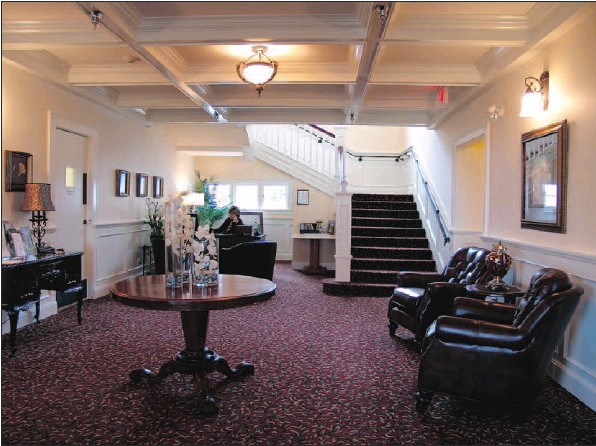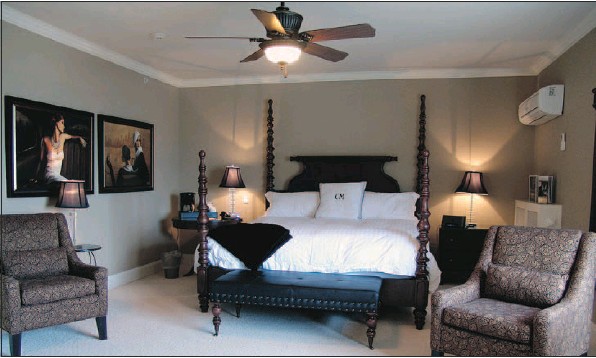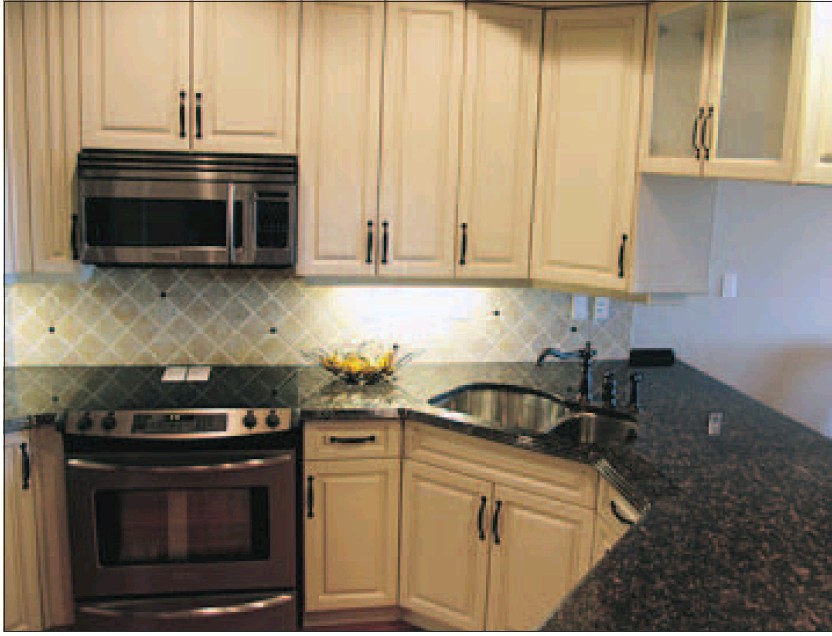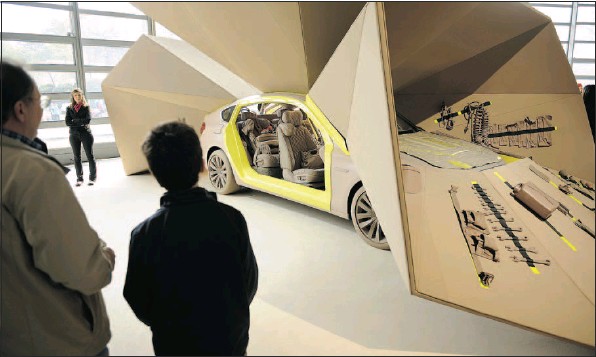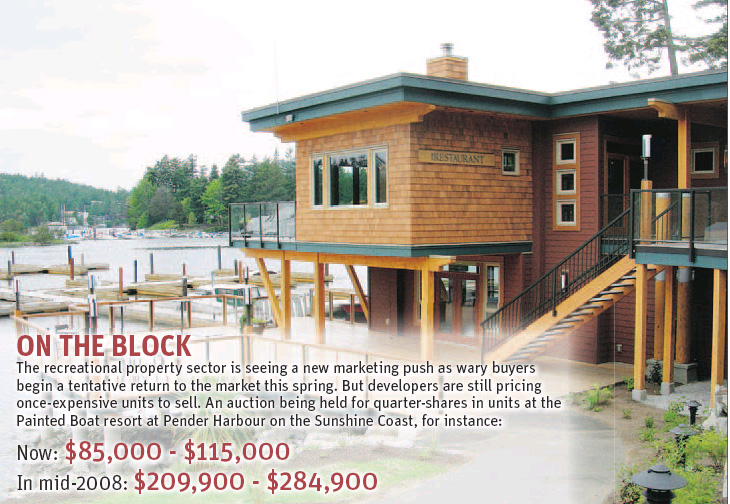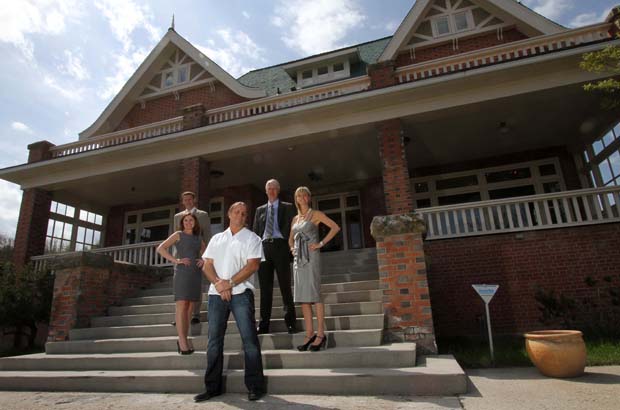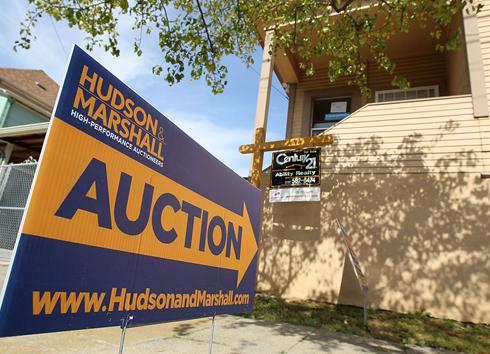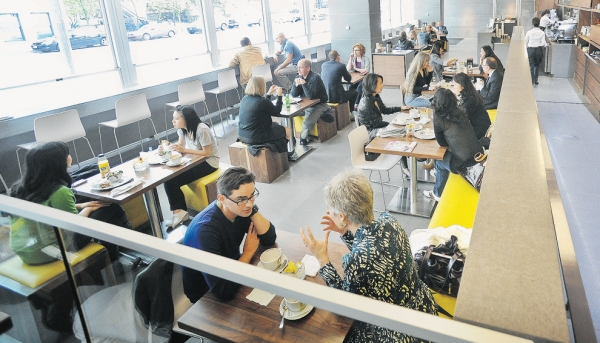Barbara Gunn
Sun

A singular address doesn’t end at the front door. It continues in the front hall, as in the Millennium Water home decorated by Mitchell Freedland. ‘You can picture the CEO of a company living here and entertaining and showing off Vancouver,” says Bob Rennie, organizer of the Millennium Water sales and marketing campaign. Photograph by: PHOTOS BY Ian Lindsay, PNG /Vancouver Sun

There are many homes in this city with exquisite finishings and million-dollar views. There are very few with exquisite finishings, million-dollar views and Olympic boasting rights.
Those residences, of course, are on the southeast shore of False Creek, once the winter home of the Squamish First Nation, and later home to sawmills, foundries, shipbuilders and the public works yard.
But the site’s more recent history — as any Vancouverite well knows — has nothing to do with industrial activity, and everything to do with some pretty spectacular days in February and March, when our city was visited by some of the best speed skaters, snow-boarders and hockey players in the world.
The Joannie Rochettes and Scott Moirs may have long gone, as have the other 2,800 or so athletes and officials who slept and ate in the Olympic athletes’ village during the Games, but the world is back — in a manner of speaking.
Today, more than 350 homes at Millennium Water will be launched with great fanfare in an event the sales team has dubbed “Avenues of the World.” To say it won’t be your average unveiling is like saying the Olympics were just okay.
“We picked eight amazing local interior designers, plus Chil Design, which did the original (presentation) suite, to really showcase what can be done (with the homes),” says marketing mogul Bob Rennie. “And we thought: Let’s bring everybody down and show people an Olympic legacy.”
Those who take Rennie up on his invitation will have an opportunity to see where some of the Olympians lived, but certainly not how they lived.
The athletes lived in units with kitchens that were boarded off with wheatboard, and with floors that were topped, not with high-priced hardwood, but with carpet tile. The units may have provided what USA Today called “a billion-dollar view of the city’s skyline across the water,” but their interiors, notes Rennie, were utilitarian.
Not so today, when Mayor Gregor Robertson, former Vanoc CEO John Furlong and Millennium Development Corp. principals Peter and Shahram Malek will be joined on site by thousands of Olympic “blue-jacket” volunteers for the ceremonial handing-over of the village keys from Vanoc to the city, and from the city to the developer.
The wheatboard is now gone, and the nine presentation suites have been outfitted to do a little showing off.
Like the 1,108-unit Millennium Water community itself, which is comprised of a diverse selection of residential offerings, ranging from high-end market penthouses to rental and affordable housing units, those show homes will be far from uniform.
“We’ve got a very simple, sustainable design, right up to hyper-luxury on the water,” says Rennie. “And then, in between, we’re having fun with a suite that’s all done in gold by Alda Pereira.”
The hyper-luxury Rennie speaks of would include the 2,900-square-foot home outfitted by Mitchell Freedland on the second floor of the Arthur Erickson-designed Canada House and within hollering distance of the dragon boats in False Creek.
Far from utilitarian, the residence has 10-foot ceilings, three large bedrooms — all with en suites — and enormous outlooks that face east toward Science World, north toward the downtown skyline, and west beyond the Burrard Bridge. It will go to market for $4.4 million.
“You can picture the CEO of a company living here and entertaining and showing off Vancouver,” says Rennie. “It’s like being on a boat without having to leave your home. And when the new roof goes on the (BC Place) stadium, you’re looking at a half-billion-dollar toy. It’s a really special location.”
(Rennie says he doesn’t know which athletes made the unit their home during the Olympics, but he will say this: “My guess is that Canada’s gold (hockey) team had some front-row seats. They’re our darlings.”)
Millennium Water, which is probably noteworthy as much for its environmental sustainability as for its Olympic legacy, was awarded a Leadership in Energy and Environmental Design (LEED) platinum certification earlier this year by the U.S. Green Building Council. That distinction, which recognized the community’s sustainability in several areas — among them, its proximity to the downtown core, its green buildings, its habitat restoration and its affordable housing component — made it “the greenest neighbourhood in the world,” Mayor Gregor Robertson noted at the time.
(The distinction is officially limited to North America, but the mayor said he knew of no comparable community.)
Sustainability, of course, has been key to the city’s development plan for all of the southeast False Creek site. Those who make their homes at Millennium Water will be sharing their neighbourhood with amenities that include a community centre, a boating facility, an Urban Fare, a London Drugs, a brew pub, an elementary school and daycare facilities — as well as a park and a new seawall promenade.
Southeast False Creek, notes the city on its website, was designed as a model sustainable development based on “environmental, social and economic principles where people will live, work, play and learn.
“This complete community will ensure goods and services (are) within walking distance and housing that is linked by transit and in proximity to local jobs.”
The LEED certification was a nod to that design, and also a much-needed boost for the city after a number of issues plagued the project — including the need for the city to step in after the builder lost its financing.
Of the 737 market homes at Millennium Water, 263 have been sold, says Rennie, noting the units on offer are being placed on the market for the first time, most within the range of $600,000 to $2 million.
“The intention was always that this would be a steady rollout of inventory,” he says. “When we went into the economic standstill in the fall of ’08, we sat down as consultants to the developer and the city — the city is holding the mortgage here — and said that our belief was that if you were still standing in the fall of ’09, you’d made it through the economy. So let’s wait and sell it when the economy comes back.
“There was no sense selling the Olympic village when there was no confidence in the world in the economy . . . And we got to September ’09 and the market was back.”
And now, notes Rennie, the homes are special for a reason beyond their location, their sustainability and their Olympic connection.
“Standing inventory just means more toward homeowners, so we get to satisfy that side of the market. And our confidence then is: If you own an existing home now, you’re liquid. It’s very easy to sell.”
Throughout all the trials of the past couple of years the Malek brothers remained focused on the job at hand, Rennie adds.
“Peter and Shahram Malek, they’re unbelievable developers. Through all the controversy and the downturn in the economy, they just put their heads down and said: ‘We’re building a village.’ They didn’t get caught up in it. They just delivered. They didn’t take the limestone off. They put more on.”
Today, however, Rennie will be focused less on the economic concerns of the past and more on the hoopla of the present.
“One reporter called me and was asking about it. He said, ‘You know, my mother-in-law in Japan e-mailed me and said we should be looking at the Olympic village.’ The word is out there,” says Rennie.
“You’re not going to have to say, in our city, ‘I live at the Olympic village’ and then have to explain where it is. It’s just going to be a statement.”
The designers taking part in the “Avenues of the World” Millennium Water launch include Alda Pereira Design, BYU Design, Inform Interiors, Kodu Design, Ledingham Design Consultants/ Livingspace Interiors, Mitchell Freedland Design, The Cross Decor and Design, William Switzer and Associates and Chil Design Group.
© Copyright (c) The Vancouver Sun

